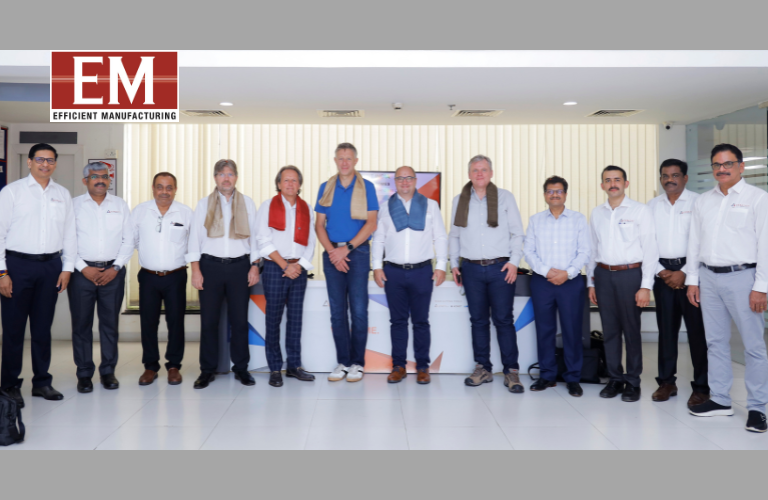An exclusive interview with Gaffar P Kandy, Managing Director, 42 Estates
1. How is 42 Estates integrating cutting-edge technologies like AI, IoT, or smart automation into your residential and commercial projects to enhance customer experience and operational efficiency?
At 42 Estates, where technology isn’t just an add-on, because it’s built into our projects as DNA. Over the past two decades, we have continuously adapted and innovated to ensure that we are delivering beyond just homes. We are delivering intelligent living spaces for the generation. Today, we are actively implementing Artificial Intelligence (AI), the Internet of Things (IoT), and smart automation across both residential and commercial developments in our projects.
Our AI-powered energy management systems learn from user behavior and adjust lighting, temperature, and appliance usage to optimize consumptions. It’s not just about saving energy but it’s about creating a lifestyle that anticipates needs for the customers. Our IoT integrations allow residents to control security systems, lighting, and even household appliances remotely and easily accessible. In villa communities like our project Between the Greens, this innovation begins with virtual walkthroughs and AI-guided customization options that help clients visualize and personalize their homes.
In a commercial setting where AI supports predictive maintenance and energy load balancing in our operations. Through our integrated apps technology where residents get real-time updates on everything from package deliveries to the clubhouse bookings. These technologies collectively engineer seamless, smart, sustainable, and secure experiences with a vision that’s deeply human-centric approach.
2. In terms of construction and design, what role do advanced technologies such as Building Information Modeling (BIM), 3D visualization, or prefabrication play in ensuring precision, cost control, and timely delivery?
Technology has changed the way we design, build, and deliver the real estate sector but at 42 Estates, we have wholeheartedly embraced that change. Building Information Modeling (BIM) plays a vital role in our construction process. With BIM, our architects, engineers, and construction teams collaborate using a single digital model idea. This not only helps identify structural conflicts before construction but also ensures every resource is accounted for to reduce time and cost for us and more importantly, for our esteemed clients.
3D visualization is another powerful tool we lead on our projects. Before purchasing, customers can take immersive, life-like virtual tours of their homes. It builds confidence in their decision-making and allows for customization before construction starts. For our internal teams, it means better aesthetics, more refined urban planning, and a zero-error execution approachments.
Prefabrication has been especially transformative for the projects in terrain-sensitive regions like Ooty. There, conventional construction poses environmental and logistical barriers. Prefabricated components are manufactured in a controlled environment to give us better quality control, reduce material waste, and significantly speed up the build in a construction. These strategies are not just about building faster homes but they’re about building smarter, with a level of precision and efficiency that modern buyers expect and deserve to live.
3. Sustainability is becoming a key factor in modern real estate. Could you elaborate on the technological innovations 42 Estates is leveraging to build energy-efficient and environmentally responsible properties?
Sustainability isn’t a checkbox for us because it’s a foundation of our development ethos. We strongly believe that luxurious living and environmental responsibility must synchronize with the process. Every new project that we initiate is adhered to national green building standards like IGBC and GRIHA. We have integrated smart lighting, solar panels, and sensor-based water management systems to drastically reduce the energy and water consumption in our constructions.
Our villas come developed with the rainwater harvesting systems and greywater recycling units as standard features but not as optional upgrades. The main idea is to build communities that are self-sufficient and resilient in the face of water challenges that occur. Residents can even track their energy and water usage in real-time through integrated dashboards promoting a culture of conscious consumption.
From using low-VOC materials and fly-ash bricks to incorporating double-glazed facades and AI-controlled HVAC systems in our commercial projects, every decision we make is rooted in reducing environmental impact on the construction. Our landscaping uses the native plant species that require minimal irrigation, supporting local biodiversity while enhancing aesthetic value to our projects. By implementing sustainability into our design, construction, and daily operations, we are building homes that are meant to last not just for physically, but ecologically valued.
4. With increasing demand for smart homes and connected workspaces, how are 42 Estates addressing data security and privacy challenges that come with technology-enabled infrastructure?
In a trending connected world, where privacy must evolve alongside technology aspects. At 42 Estates, we treat data security not as a feature but as a more responsibility. Every smart system we install from IoT-enabled locks to surveillance systems operates on encrypted platforms that meet international cybersecurity standards and are safe for our customers.
We will perform regular security audits and checkings, partner with cybersecurity experts, and use the layered access protocols to ensure residents are in full control of their data and security. Our mobile applications which handle everything from service requests to smart home settings, are hosted on secure cloud storage environments. These are routinely tested through penetration testing (ethical hacking) and updated to match evolving cyber threats in our society.
At the community level where we ensure digital visitor logs and public surveillance operate on independent, firewalled systems. This avoids any overlap with personal user data. We have also initiated resident awareness through campaigns, because even the most secure systems require informed usages. True data security is a collaboration between technology and the user interface. Our goal is to ensure our smart homes offer peace of mind both in lifestyle and in privacy to our customers.
5. How are you using technology to personalize the customer journey, from property discovery to post-possession services, particularly in an era where digital engagement is becoming crucial?
Today’s homebuyers are digitally clever and they expect experiences that reflect that technology. At 42 Estates, we leverage technology to create a personalized, responsive, and transparent customer journey in buying their dream home. From the first inquiry, our AI-enabled CRM system segments buyers based on their intent, be it an investor, first-time homeowner, or an NRI and customizes communication or any customers accordingly. Our digital tools like VR walkthroughs, interactive floor plans, and online configurators let customers explore the properties at their convenience, from anywhere in the world. The booking and documentation process is fully digitized, eliminating manual delays, reducing errors and can be accessible, flexible and usable.
But the real game-changer lies in our post-sales engagement sector. Each buyer gets a personalized dashboard with live construction updates, milestone notifications, and video walkthroughs. Even after the possession, residents can use our app for service requests, community interaction, and smart home customization. We are also operating AI-led tools that allow interior layout suggestions and enable customers to personalize their homes digitally before making final decisions to buy. Our main objective is to blend technology with empathy so every buyer feels seen, heard, and supported throughout their journey in buying their property.
6. Looking ahead, what emerging technologies do you foresee playing a transformative role in the real estate sector, and how are 42 Estates preparing to adopt or lead in those areas?
We are at a crucial moment in real estate where technology is no longer an option, but the driver of progress and importance in our lives that must be present in this generation. At 42 Estates, we are committed to leading this transformation in our projects. We believe the future lies in creating responsive, intelligent, and sustainable spaces that improve quality of life. For example, Digital Twins offer us the ability to create real-time digital replicas of buildings and communities. These models help us monitor operations and manage predictive maintenance, and optimize energy to use all remotely available to access and use. It’s not a distant dream, it’s already taking shape in our planning processes.
Artificial Intelligence is the other frontier we are expanding. From generative design in architecture to automated customer service bots and predictive resource management. AI is enhancing efficiency across our value chain. We are also exploring AR and VR integrations for team collaboration and customer previews, and closely watching developments in blockchain for secure, transparent property transactions.
Our vision is clear to stay agile, partner with technology leaders, and continue building infrastructure that’s not only smart but deeply human-centric. We don’t just construct buildings, we curate experiences and we do it with tomorrow in mind for our customers to feel it as their dream property.












